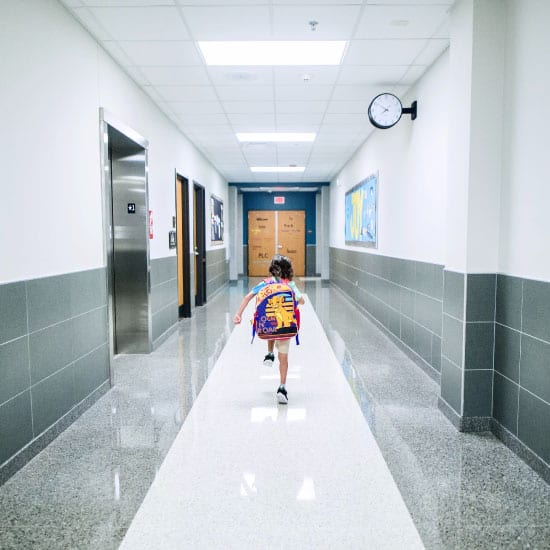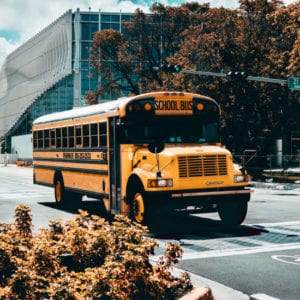Independent school CFOs excel at keeping their institutions running smoothly during the pandemic, but worry about long-term sustainability
This past summer, EAB’s Independent School Executive Forum hosted monthly virtual roundtables for independent school CFOs. These sessions were designed to facilitate discussion between CFOs from similar institutions to share COVID-19 challenges and solutions. Below are the five major takeaways from these rich and fruitful discussions, many of which will shape our research agenda in the fall.
Key takeaway #1:Concern about enrollment for fall 2020 in early summer was mitigated with new applications from public school families; however, schools have taken different approaches to handle interest from this new market
Last June, we heard from CFOs and enrollment leaders that they were uncertain about what enrollment would look like in the fall. While many schools were full, others were awaiting final enrollment decisions as commitment deadlines were pushed back, families’ job situations changed or plans to relocate fell through, and international students were unable to return to the US.

However, as COVID-19 cases continued to surge and more public school parents were concerned about the possibility of continued virtual learning in the fall, applications to independent schools rose. Indeed, this has been a unique moment for independent schools to showcase their value in delivering high-quality instruction, whether in-person or virtual, and engaging students in extracurricular activities, while providing personalized attention and support.
Some partner schools decided to take advantage of these new markets and overenroll their classes, as they expect a certain percentage of students to opt for virtual learning and can accommodate these students on-campus. Others are using the rise in applicants to fill empty seats in lower school, where enrollment has been softening. Still others are trying to find a way to take advantage of this new market by experimenting with their business model in terms of school offerings.
To learn more about how to convey your value during COVID-19 and utilize digital marketing to target new prospects, explore our digital marketing resources.
Key takeaway #2: Schools are trying to accommodate faculty needs around safety and childcare, while also balancing their desire to have faculty back to campus full-time
As the start of the school year drew closer, more and more teachers began to express their concern about returning in-person, with some schools citing as many as 90% of faculty members saying they were worried about coming back. In some cases, teachers even anonymously signed an online petition voicing concerns about independent schools’ ability to bring students and teachers safely back to campus for face-to-face instruction. An area that was particularly challenging for schools was how to allow older or medically vulnerable teachers to continue to work from home, even if students were back on campus.
While CFOs wanted teachers to feel comfortable sharing such worries, they also wanted to do what they could to encourage them to come back. In some cases, this meant taking the time to walk through detailed plans for returning to learn; in other cases, it meant offering additional benefits, such as on-campus childcare for faculty with young children enrolled in public school who would be learning virtually in the fall.
Key takeaway #3: CFOs are concerned about the costs of keeping their schools safe, as well as the sustainability of their institutions if the pandemic continues into next school year
Throughout the summer, CFOs shared a wide range of questions and anxieties they felt, particularly when it came to their schools’ finances. Early in the summer, a major concern was whether or not to accept the PPP loan from the federal government, especially if it meant opening them up to negative press or the possibility of not having the loan forgiven. Later, a common worry was about the level of investment schools had to make in an attempt to keep everyone on campus safe, such as ordering room partitions, hiring more staff, and purchasing PPE, while worrying that they would also have to offer tuition credits to families for services that were no longer being offered.
The long-term viability of remote learning or a hybrid model also came up repeatedly, as CFOs wondered whether a pandemic lasting longer than one year would impact their value proposition and, in turn, parents’ willingness to enroll their children at the school.
Key takeaway #4: By August, CFOs began to look ahead to strategic opportunities arising from the pandemic, even if they didn’t have the bandwidth to address them in the near-term
Nearly all CFOs want to pursue the potential of new opportunities created by COVID-19—just not right now. Some cited interest in exploring new business ventures, such as offering “pod” services to students that cannot enroll because the school is too full. But as one CFO put it, “I couldn’t imagine taking on anything else right now.”
Another CFO said that she felt this challenging time was forcing her to consider how her institution could emerge stronger and more resilient in the future. Another shared that he was considering how his school could find different ways to take advantage of all the new technology they had invested in, whether for new school programming or new business opportunities.
Key takeaway #5: Schools are approaching the 2020-2021 year creatively, planning endlessly for different scenarios, while acknowledging that it all may still go awry

We heard countless proposals for how independent schools are reopening this year, from full five-day, in-person learning, to hybrid models with separate cohorts, to virtual for all but lower grades. Schools were investing in everything from plexiglass to protect students at desks, to event tents in which to hold outdoor classes, to new systems to improve air ventilation and filtration, to spit tests for rapid on-campus testing. In addition, schools have had to put money into new technology to ensure high-quality virtual learning, as well as professional development to ensure that faculty are able to effectively teach online.
All in all, we heard estimates of schools investing upwards of $3 million in an attempt to prepare campuses for a safe and successful year, with no guarantee that these efforts would pay off.
Next steps
EAB is working hard to support our partners to address their immediate needs during COVID-19, while also researching innovative strategies to help our partners think about the opportunities presented by this pandemic. If you are interested in learning more about how EAB can support your institution, contact Claire Criniti at [email protected].
More Blogs

Where superintendents are creating clarity in 2025

From building managers to strategic leaders
